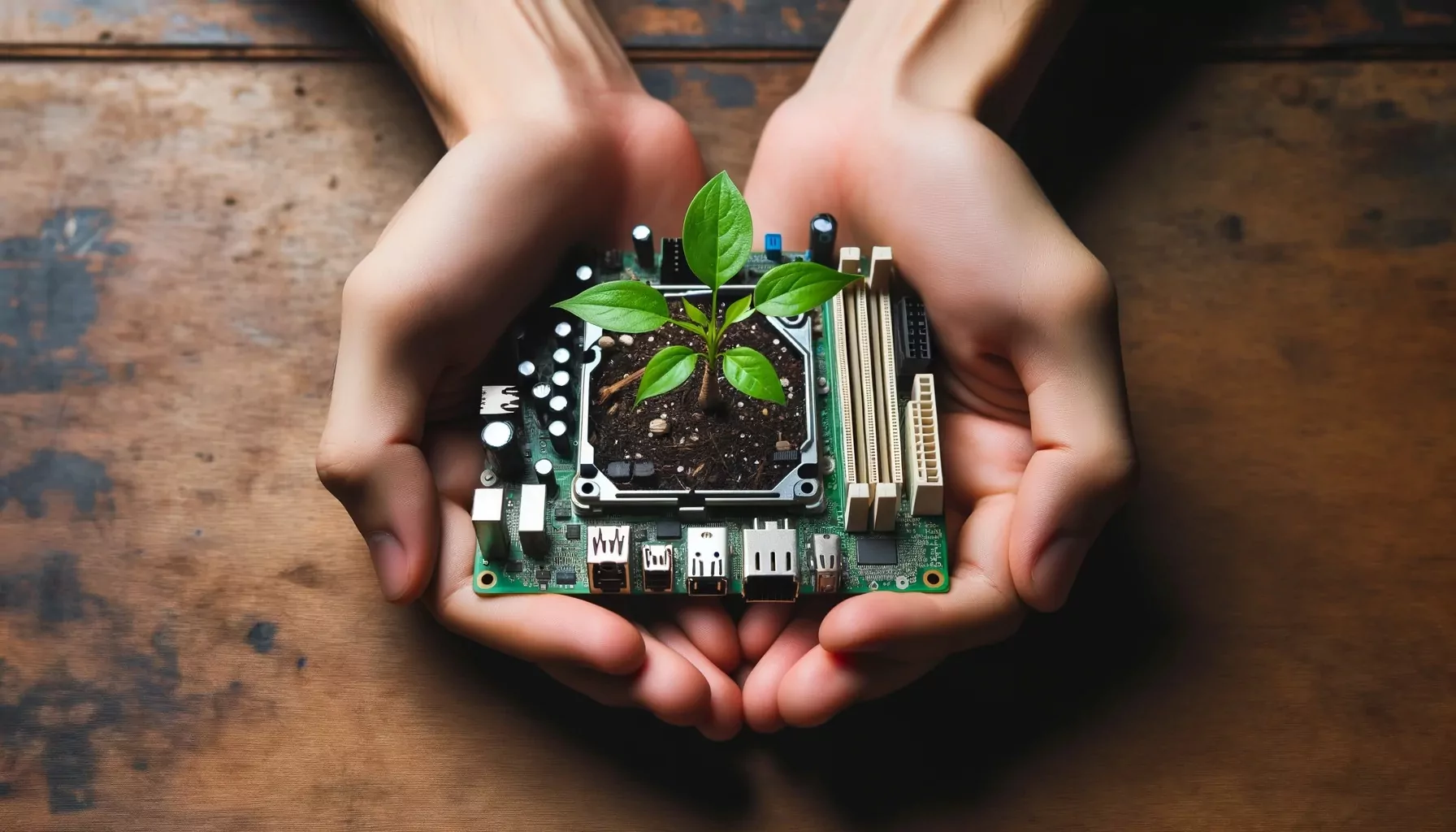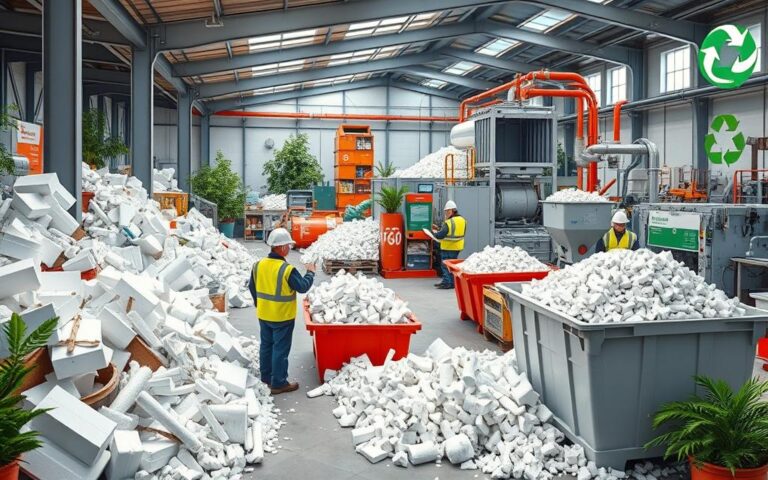The Role of Computer Recycling in Sustainable Computing
The importance of Sustainable Computing extends beyond mere environmental stewardship; it also encompasses economic and social dimensions. By adopting sustainable practices, businesses can not only reduce their carbon footprint but also achieve cost savings in the long run. For individuals, understanding the environmental implications at each stage of a computer’s lifecycle can empower them to make informed decisions that contribute to a more sustainable future.
This article will delve deep into the various stages of a computer’s lifecycle, with a special focus on the often-overlooked but vitally important aspect of computer recycling. Through this lens, we aim to shed light on how each of us can play a part in fostering a more sustainable relationship with technology.
Lifecycle of a Computer
Understanding the lifecycle of a computer is a pivotal aspect of Sustainable Computing. This lifecycle can be broadly categorized into four main stages, each with its own set of environmental implications:
- Manufacturing and Production: The journey of a computer starts with the sourcing and processing of raw materials. This stage involves energy-intensive procedures, including the extraction of over 30 different minerals. The environmental cost can be significant, not only in terms of energy consumption but also the potential for waste and pollution.
- Distribution and Retail: After the manufacturing process, computers are distributed to various retail outlets or sold directly to consumers. This stage involves transportation, which contributes to carbon emissions. The choice of transportation mode and distance traveled can have varying impacts on sustainability.
- Usage: This is the phase where the computer is in active use. It involves not just the energy required to run the device but also the energy consumed by data centers that support various online activities. Adopting energy-efficient practices and settings can mitigate some of the environmental impacts during this stage.
- End-of-Life and Disposal: The final stage involves the retirement of the computer. Whether the device ends up in a landfill or is recycled, this stage has significant environmental implications. Proper recycling can prevent harmful substances from entering the environment and also provide a source for reusable materials.
Each of these stages presents unique challenges and opportunities for Sustainable Computing. For a more in-depth understanding, you can refer to this complete guide to sustainable Technology Lifecycle Management.
Environmental Impact at Each Stage
Manufacturing and Production
The manufacturing and production stage is perhaps the most resource-intensive part of a computer’s lifecycle. Here, various raw materials like metals, plastics, and chemicals are extracted and processed. This stage involves significant energy consumption, often from non-renewable sources, leading to greenhouse gas emissions. Additionally, the extraction processes can result in land degradation and water pollution. For a deeper dive into the environmental costs associated with this stage, you can refer to this University of Oxford article on the environmental impact of IT.
Distribution and Retail
Once the computer is manufactured, it moves to the distribution and retail stage. This involves transporting the computers from factories to warehouses, and then to retail outlets or directly to consumers. The environmental impact here is mainly in the form of carbon emissions from vehicles. The longer the distance, the higher the emissions. Moreover, packaging materials like plastic and Styrofoam contribute to waste, unless they are made from recycled or biodegradable materials.
Usage
The usage stage is often the longest and most familiar to consumers. During this phase, the computer consumes electricity, contributing to its carbon footprint. The type of energy source used can significantly affect the environmental impact. For instance, using renewable energy sources like solar or wind power can mitigate some of the negative effects. Additionally, data centers that support cloud storage and online activities are significant energy consumers, often running 24/7, thereby contributing to the overall environmental impact.
End-of-Life and Disposal
Finally, the end-of-life and disposal stage is a critical determinant of the computer’s overall environmental footprint. Computers that end up in landfills can leach harmful substances like lead and mercury into the soil and water. On the other hand, proper recycling can recover valuable materials like gold, copper, and aluminum for reuse, thereby reducing the need for new raw materials. Recycling also prevents harmful substances from entering the environment and contributes to a circular economy, which is a key aspect of Sustainable Computing.
By understanding the environmental impact at each of these stages, individuals and organizations can make informed decisions that contribute to Sustainable Computing. This comprehensive approach not only helps in reducing the environmental footprint but also promotes responsible computing practices.
How Sustainable Practices Can Make a Difference
Sustainable Manufacturing
Sustainable Manufacturing involves adopting eco-friendly practices right from the extraction of raw materials to the production process. This can include using renewable energy sources, reducing waste through efficient design, and minimizing the use of harmful chemicals. Companies can also adopt Circular Economy models to reuse and recycle materials, thereby reducing the need for new raw materials.
Green Distribution Channels
The Distribution and Retail stage can be made more sustainable through Green Distribution Channels. This involves optimizing transportation routes to reduce fuel consumption and carbon emissions. Additionally, using electric or hybrid vehicles and adopting eco-friendly packaging materials can further reduce the environmental impact.
Energy-Efficient Usage
During the Usage stage, adopting Energy-Efficient Practices can significantly reduce a computer’s carbon footprint. This includes using energy-saving settings, turning off the computer when not in use, and opting for cloud services that run on renewable energy. Moreover, regular maintenance can extend the lifespan of the computer, reducing the need for frequent replacements.
Responsible End-of-Life Management
The End-of-Life and Disposal stage can benefit greatly from Responsible End-of-Life Management. This involves proper recycling practices that prevent harmful substances from entering the environment. Programs like e-waste collection drives and certified recycling centers ensure that valuable materials are recovered for reuse.
By integrating these Sustainable Practices into each stage of a computer’s lifecycle, we can significantly mitigate the environmental impact and contribute to Sustainable Computing. These practices not only help in preserving the environment but also offer economic benefits in the long run.
Case Studies: Success Stories in Sustainable Computing
Tech Companies Leading the Way
In the corporate world, tech giants like Apple and Dell are setting the standard for Sustainable Manufacturing. Apple, for instance, has committed to becoming 100% carbon neutral across its entire business by 2030. Dell, on the other hand, has initiated a wide-ranging sustainability program that includes using recycled ocean plastics in its packaging. These companies are not just talking the talk but walking the walk, proving that sustainability and profitability can go hand in hand. For a closer look at how tech companies are incorporating sustainability, you can explore these Sustainable Cloud Computing Case Studies by Amazon Web Services.
Government Initiatives
Governments worldwide are recognizing the importance of Sustainable Computing and are implementing policies to encourage responsible practices. China, for example, has been focusing on internal organizational aspects like attitude, policy, practice, and technological infrastructure to promote green IT. Their initiatives serve as a model for how governmental intervention can accelerate the adoption of sustainable practices. For more information, you can read this Case Study by MDPI on Green IT Transformation in China.
Grassroots Movements
At the community level, Grassroots Movements are making significant strides in promoting Sustainable Computing. These initiatives often involve local e-waste collection drives, educational seminars, and community outreach programs. They aim to raise awareness about the environmental impact of irresponsible computing and offer practical solutions for individuals and small businesses. For a broader perspective on grassroots initiatives, you can refer to these Top 10 Sustainability Case Studies & Success Stories in 2023 by AIMultiple.
Educational Institutions
Educational institutions are not just teaching about sustainability; they are practicing it. Many universities and schools have integrated Sustainable Computing into their operational strategies, often in collaboration with tech companies. These partnerships focus on research and development of energy-efficient computing solutions, thereby contributing to the broader goals of sustainability. For academic insights into sustainable computing education, you can read this article on User and Professional Aspects for Sustainable Computing Based on the Internet of Things in Europe.
By examining these Case Studies, we can glean valuable insights into the practical applications and successes of Sustainable Computing. These real-world examples serve as both inspiration and a roadmap for how we can implement sustainable practices in our own lives and organizations.
Frequently Asked Questions (FAQ) on Sustainable Computing
What is Sustainable Computing?
Sustainable Computing refers to the practice of using computing resources in an environmentally responsible manner. It encompasses various stages of a computer’s lifecycle, from manufacturing to disposal, aiming to minimize the environmental impact.
Why is Sustainable Computing Important?
The importance of Sustainable Computing lies in its potential to mitigate the environmental impact of the rapidly growing digital world. It helps in reducing energy consumption, minimizing waste, and promoting the recycling of electronic devices.
How Can I Practice Sustainable Computing?
Individuals can practice Sustainable Computing by adopting energy-efficient settings on their devices, properly recycling old electronics, and choosing products that are designed with sustainability in mind.
Are There Any Regulations on Computer Recycling?
Yes, many countries have regulations that mandate proper recycling of electronic waste. These laws aim to prevent harmful substances from entering the environment and encourage the recycling of valuable materials.
What are Some Examples of Sustainable Computing Initiatives?
Various tech companies, governments, and community organizations have implemented sustainable computing initiatives. These range from using renewable energy in data centers to organizing e-waste recycling drives. For more examples, refer to the Case Studies section of this article.
How Can Businesses Contribute to Sustainable Computing?
Businesses can contribute by adopting Sustainable Manufacturing practices, optimizing data center operations for energy efficiency, and implementing responsible e-waste disposal programs.
Conclusion: The Path Forward in Sustainable Computing
As we’ve explored throughout this article, Sustainable Computing is not just a buzzword; it’s a necessity for our increasingly digital world. From Sustainable Manufacturing by tech giants to Government Initiatives that mandate responsible practices, the various case studies we’ve examined demonstrate that sustainable computing is both achievable and beneficial.
The Environmental Impact at each stage of a computer’s lifecycle presents both challenges and opportunities. By adopting Sustainable Practices, we can mitigate these impacts and contribute to a more sustainable future. Whether you’re an individual, a business owner, or a policy-maker, each one of us has a role to play in this endeavor.
The future of Sustainable Computing looks promising, with ongoing research and development aimed at creating more energy-efficient and eco-friendly computing solutions. As consumers, staying informed and making responsible choices can go a long way in supporting these initiatives.
In conclusion, Sustainable Computing is an integral part of the broader sustainability goals that our society needs to achieve. It’s a collective effort that requires active participation from all stakeholders. Let’s take the insights gained from this article as a stepping stone towards a more sustainable relationship with technology.















